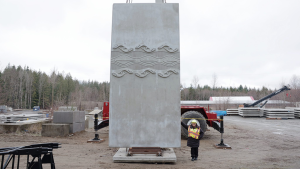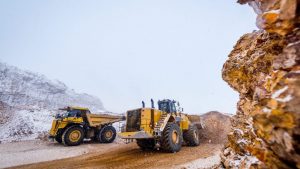LEED and other green-feature building projects continue to form a larger percentage of the Canadian construction market. To date, no Canadian projects have failed to achieve the LEED status they were aiming for, either due to contractor or project team errors.
LEED and other green-feature building projects continue to form a larger percentage of the Canadian construction market. To date, no Canadian projects have failed to achieve the LEED status they were aiming for, either due to contractor or project team errors.
But south of the border, several lawsuits have been launched against builders and developers because green features allegedly failed to perform as promised, or because a project failed to achieve the level of LEED certification the owners expected.
In Canada, however, no construction insurance or surety products have specifically targeted LEED construction projects, says Ian Theaker, senior sustainability consultant with the Toronto offices of Halsall Associates Ltd.
“I haven’t seen any products addressing this yet,” says Theaker. “One of the reasons for this may be that the LEED process has been specifically set up to make planning decisions that avoid problems down the road. The design development phase of LEED projects involves a lot more scrutiny of the design, including the use of a shadow team to provide extra oversight.”
Theaker says that LEED designs add little to the actual average cost of a building project, so insurance and surety products should only rise incrementally to reflect the value of the project.
“We’re seeing project budget increases of perhaps two per cent to achieve LEED Silver and seven to eight per cent for LEED Platinum. The difference in costs is well within the traditional noise level of an equivalent building not looking for LEED status. We’re hearing talk of Ontario including a $2 million penalty clause for buildings that fail to achieve LEED Silver certification in AFP projects, but the insurance industry is already used to dealing with penalty clauses — it’s the level of risk they need to determine.”
Theaker notes that insurance companies may find it initially challenging to evaluate the risk associated with novel building materials and building techniques, but that the market soon catches up as these become mainstream.
“We don’t recommend to any builder or design team that they promise an owner that the project will receive any level of LEED certification,” notes Theaker.
“In Canada, that can only be granted by the Canada Green Building Council (CaGBC). You have to do the actual stuff to get the project there and document what you’ve done. What you can do is to promise to meet certain design and performance parameters, but this sort of thing is already covered in traditional construction market insurance products.”
Theaker recommends that the best insurance to achieve LEED certification is to actually overshoot the LEED guidelines by a few points.
“The project should put at least five extra points in its pocket to achieve the level of LEED certification its looking for,” says Theaker. “You can’t guarantee any particular number of points will be recognized by the CaGBC, so if you shoot higher than your goal, you can afford to miss one or two points along the way. Quite often, projects that are doing better than anticipated get a little bit more ambitious and decide that they might shoot for Platinum instead of Gold, for example.”
Theaker says that running an energy simulation and having a building commissioned prior to hand-off also provides extra assurance the project will achieve the design parameters required for LEED certification.
In the U.S., however, some insurers are providing niche coverage for LEED projects. U.S.-based Chartis Insurance offers Green Indoor Environment Coverage to cover bodily injury due to the failure of specialized equipment and products that improve air or water quality in green buildings, something not explicitly covered in other policies. It also offers Green Reputation Coverage, which covers the cost of legal defense, and the hiring of crisis management consultants in the face of adverse publicity related to the failure of a building to meet green industry standards.
“It would cover the legal cost of defending a lawsuit in which the insured’s reputation would be damaged for failing to achieve a promised green standard,” says Joseph Fobert, senior vice-president with Chartis.
“This is a product we’re looking to make available in Canada.”










Recent Comments
comments for this post are closed